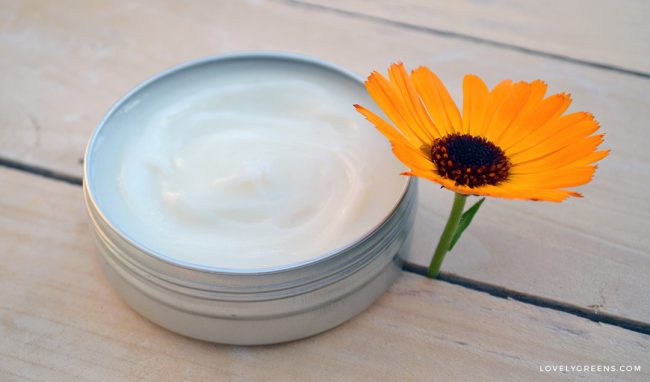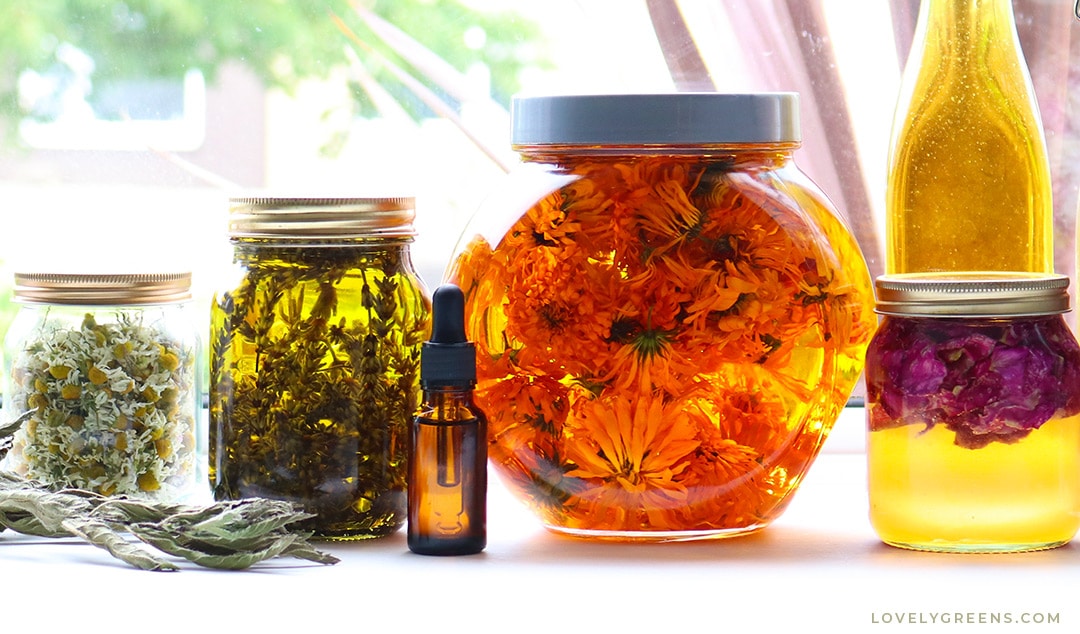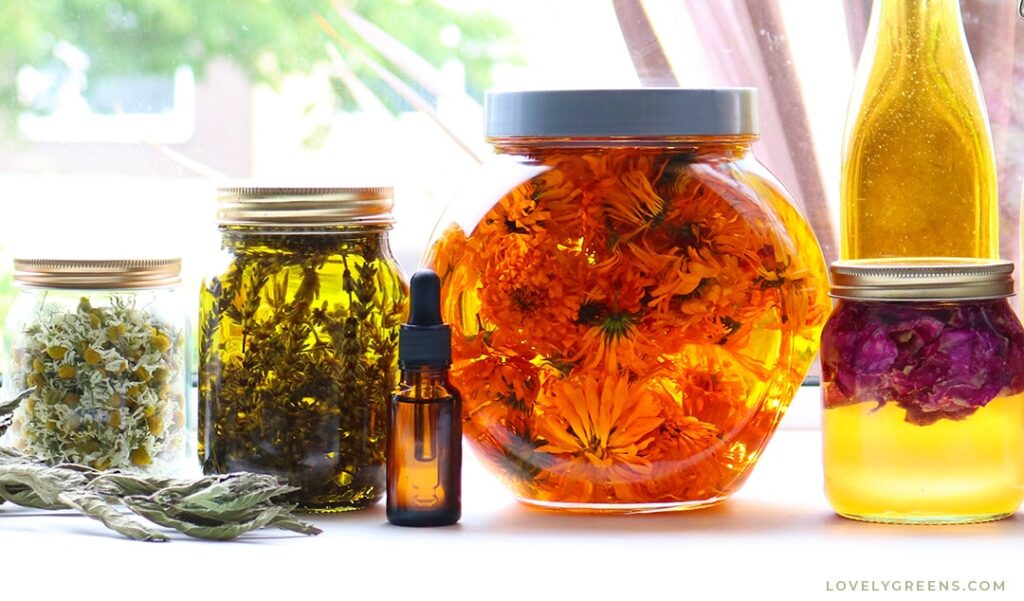
An introduction to how to use herbs and flowers to make natural herbal skincare. Covers herbal extracts recipes using them to make lotions, creams, and other beauty items. Part of the DIY Herbal Skincare series.
DIY Herbal Skincare
There are a lot of reasons why you’d want to make your own herbal skincare. Some include wanting to treat your skin as naturally as possible, saving money on beauty products, using garden herbs you already have growing, starting a business, or just as a fun weekend project. Whatever the reason, learning to use herbs is a valuable and creative skill to have. Your skin will love you for it too.
from plants to our skin
Many plants have skin-beneficial properties that you can safely extract at home. These properties come in the form of flavonoids, tannins, mucilage, antioxidants, resins, acids, proteins, and volatile oils. Depending on the plant, they can originate in flower petals, leaves, bark, roots, or stems.
Each plant has different extracts that you can exploit to make your own beauty products. Creating those extracts is the basis of this piece. Making DIY herbal skincare recipes is all about isolating those natural chemicals using simple folk methods.
In most cases, this is an extra step that you take before making that recipe. For example, you can first make calendula-infused oil and then use it to make body balms, lip balms, creams, salt scrubs, bath bombs, and more. The rest of this piece takes you through herbal extraction methods and herbal skincare recipes.
Oil-based Herbal Skincare
- Balm – a firm oil-based product that needs rubbing into the skin. The hardness comes from a moderate amount of beeswax, soy wax, or another hard oil. You make balms using liquid oils, solid oils, infused oils, waxes, and essential oils.
- Salve – Salves are oil-based products similar to balms but softer. They contain a higher percentage of liquid oils and are generally used for medicinal purposes such as this herbal healing salve.
- Cream – You make creams by blending a small amount of oil into a larger amount of water using an emulsifier. Both the oil and water content can be infused with herbs and flowers.
- Serum – concentrated plant extracts in either water or liquid oil. You apply it to your skin after cleansing but before moisturizing. Serums are liquid oil-based and may be infused oils or have essential oils added to them
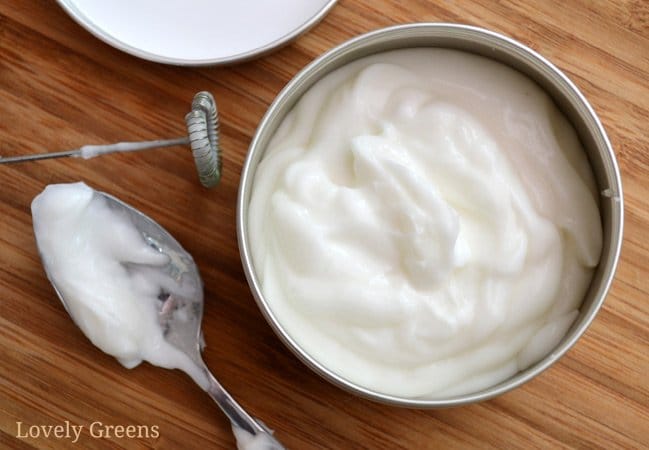
Other Herbal Skincare
- Cleanser – there are various types of cleansers but they all do the same thing: clean the skin. Cleansers are used to remove oil, dirt, and make-up from the face and may be soap or made with other ingredients.
- Lotion –Most people think of lotions as a thin cream (above) but technically they’re a herbal water infusion used to bathe the skin.
- Rinse – typically a water infusion that you use on your skin or hair. When it dries, the water content evaporates off leaving botanical extracts behind. Rinses can also be made with vinegar and other liquids.
- Toner – a liquid that you apply to your skin with cotton wool. Some are astringent and can remove oil and tighten skin. Some are gentler and aid in cleansing and refreshing. Many tinctures can be used as toners, as can tisanes made with astringent herbs.
- Soap – On a chemical level, soap is a salt of a fatty acid. It’s made by introducing caustic substances with oils and is used as a skin cleanser. You can add fresh herbs and flowers to cold-process soap but it’s debatable as to whether herbal properties survive the soap making process. However, you can use herbs, flowers, seeds, and roots to naturally color handmade soap.
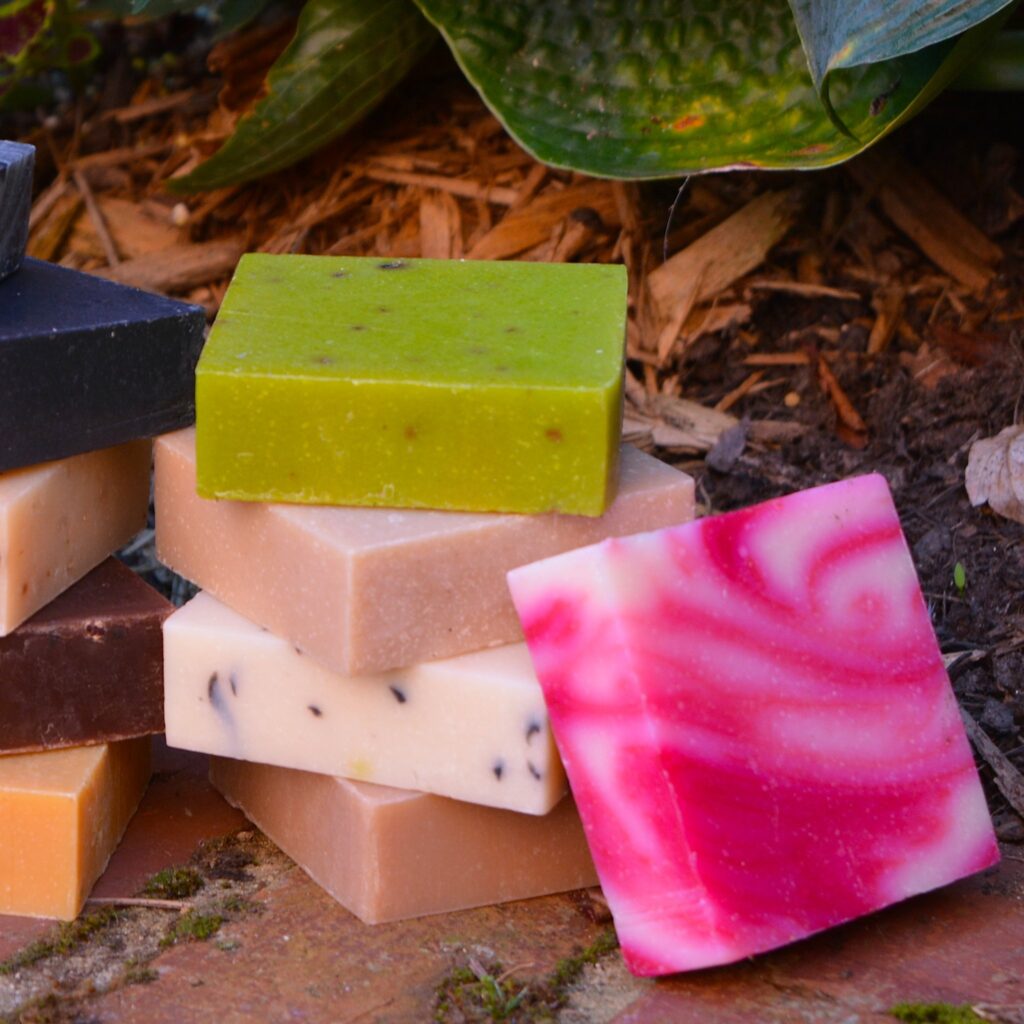
Using Fresh Plants and Flowers
Creating herbal extracts usually begins with picking and drying the plant material. It continues with infusing it into oil, water, or alcohol, to make the ingredients to use in beauty recipes. However, there are a few cases where you can work with fresh material from the get-go. Here are a few ideas:
- Fresh Organic Aloe Face Lotion
- Calendula petals in making handmade calendula soap
- Lavender buds in this Soap-less Face Cleanser
- Herbal face masks
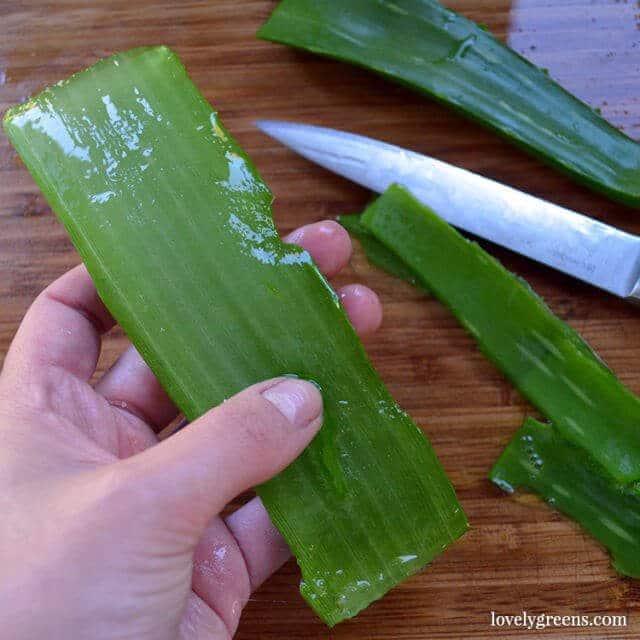
The Importance of Preserving Plant Material
Just like fresh veggies, herbs and flowers can go off. They can grow mold, rot, and become a magnet for microbes. It mainly has to do with the water content in the plant material, however little it may seem. It encourages bacterial growth and unless a broad-spectrum preservative is used, then your beauty products can go off too.
For example, fresh aloe vera gel is only good for 7-10 days in the refrigerator. And we’ve all seen how quickly a bunch of herbs can go brown and icky. If you make a skin cream with either and don’t use a preservative, you could have mold and bacteria growing in it within days – whether you see it or not. Making safe DIY herbal skincare means learning how to preserve plants first, and to make products that won’t spoil.
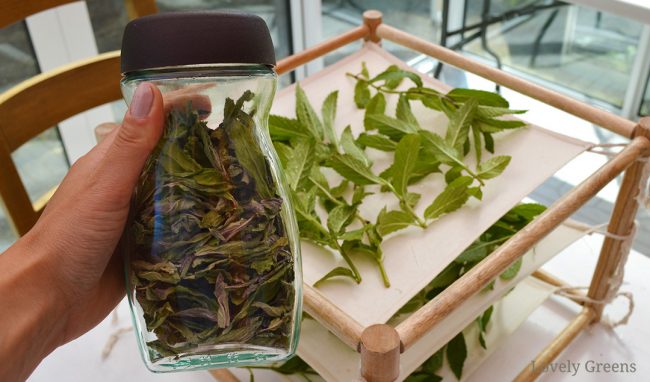
Drying Herbs & Flowers
One way to extend the life of skincare herbs is to first dry them, then use them on the go. Once dried, plant material usually has a shelf-life of one to two years. You can use the plants during that time to infuse into oils, water, glycerin, or alcohol, to make skincare.
Harvest herbs late in the morning on a fair day. It’s then that the dew has had a chance to evaporate and the plant’s volatile oils are at their peak. You pick flowers that open in the day and close at night, like chamomile and calendula, when they’re fully open in the afternoon.
Dry them in a food dehydrator, on a drying screen, hanging them on a rack, or in a pinch, the oven on very low heat. If you’re using the oven method, make sure to prop the oven door open a little to let the water vapor escape.
Make sure that you know which part of the plant you need, and the best way of drying it. Whichever way you use, make sure that the plant material is crispy, bone dry, and room temperature before you store it in jars or ziplock bags.

Oil vs Water soluble
Your extraction method largely depends on the herb you’re using and what you’re planning on making. Many herbs like rosemary, plantain, and calendula, happily infuse into a carrier oil. Other herbs and flowers, like rose petals, contain substances that are water-soluble. Some are both water and oil-soluble.
Water is a polarizing substance that attracts other polar substances like flavonoids, polyphenols, organic acids, sugars, and glycosides. Fatty acids, lipids, carotenoids, tocopherols, and carotenoids extract best into oil, a non-polar substance.
Ethanol alcohol can extract both oil-soluble and water-soluble substances and you use alcohol to make tinctures.
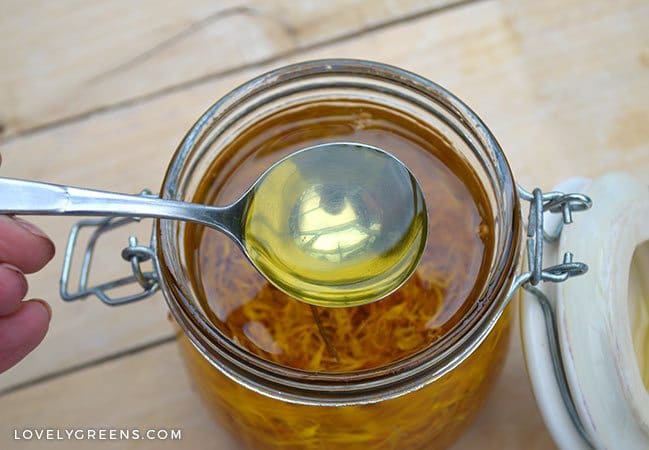
Herb Infused Oils
One of the simplest ways to extract skin-beneficial properties from plants is to make a herb-infused oil. It involves infusing herbs and flowers, usually dried, in a carrier oil such as olive oil, sweet almond oil, or even coconut oil. Depending on which of these six methods you use to make it, the oil is finished between one day and four weeks. Afterward, you strain the oil out and can use it directly on the skin or to make other products. Some of the many herbs that you can infuse into oil include:
- Calendula (flower)
- Chamomile (flower)
- Comfrey (leaf)
- Lavender (flowers)
- Lemon balm (leaf)
- Plantain (leaf)
- Rosemary (leaf)
- Yarrow (leaf)
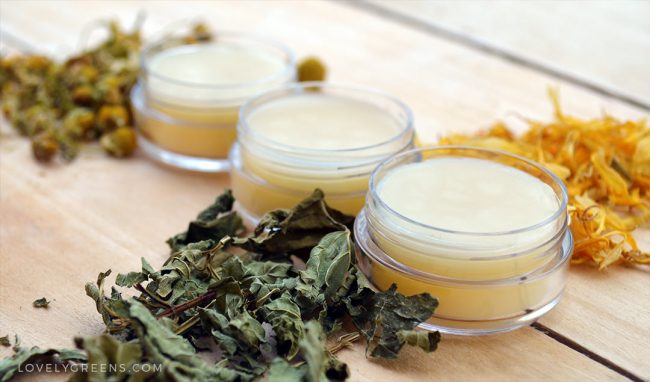
Herb Infused oil for DIY Herbal Skincare
The easiest thing you can use infused oil for is massage oil. You can also use it in your daily beauty regime as a serum, or as an ingredient to make body balms, lip balms, salves, and creams. Here are some ideas:
- Herbal Healing Salve
- Herbal Lip Balm Recipe
- Calendula skin cream
- Alkanet soap
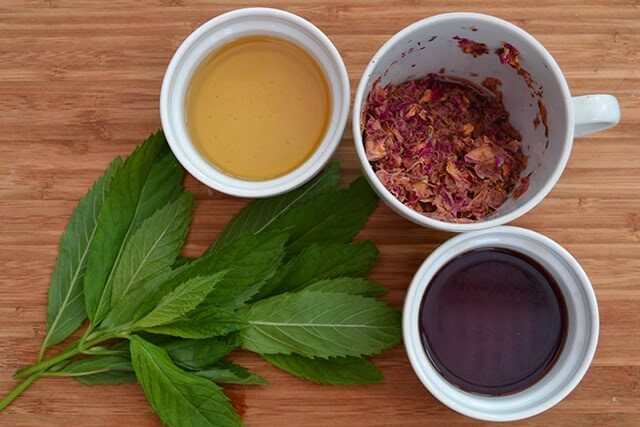
Herb-infused Water for Skincare
The proper term for herb-infused water is a tisane but you might want to think of it as a herbal tea. They’re made as an infusion or as a decoction, and once cooled you can use herbal water to make skin creams or to use as lotions and rinses. You could also splash your face with a herbal tisane after cleansing and thus use it as a serum/toner.
You make water infusions in the same way that you’d make an ordinary cup of herbal tea. The only difference is that you’d use more herbal material, and sometimes allow the tea to steep for longer. Decoctions are for tougher plant materials like roots and bark. You make a decoction by boiling the plant material in water.
As a hair rinse, rosemary tisane is said to stimulate blood flow, combat dandruff, and help with hair loss. You use chamomile hair rinses to gradually lighten hair. Tisanes are a great base for making skin creams or to use as gentle toners. Make your own skincare tisanes with:
- Calendula (flower)
- Chamomile (flower)
- Echinacea (all parts)
- Lavender (flower)
- Lemon balm (leaf)
- Peppermint (leaf)
- Rose (flower and hip)
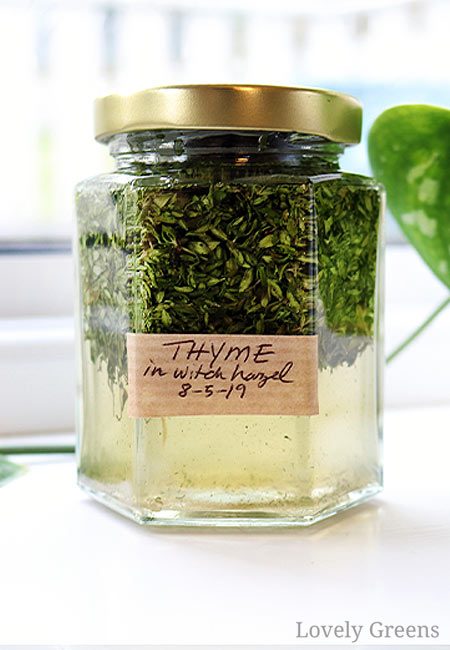
Tinctures for Skincare
Tinctures are the best way to extract the full spectrum of plant chemicals. They typically use alcohol as the liquid and when you make them at home the most commonly used is 80 proof vodka. It’s not exactly kind on the skin though and can be extremely drying. You could instead use purchased witch hazel to make skin tinctures. This common skin toner is a mixture of witch hazel extract, Hamamelis virginiana, and a small amount of ethanol alcohol.
You can make an even gentler type of tincture with vegetable glycerin. It’s a sweet and sticky substance used in formulating skincare recipes, especially creams and lotions. It’s very moisturizing and will not strip your skin.
The solvent you choose when making tinctures should be relevant to what you’re using it for. Alcohol is best for extracting essential oils, alkaloids, glycosides, acids, and bitters. Glycerin and vinegar are better at extracting other substances from your herbs.
Tinctures can pull both water and oil-soluble substances from plants so can be one of the most effective skincare ingredients you can make. Use tinctures on their own or diluted with distilled water as skin-toners, to disinfect pimples and minor cuts, and to mix into skin care recipes such as creams and toners. Herbalists will usually recommend that you take other skincare tinctures, such as burdock root and red clover, internally.
However, thyme tincture is one that you can use for breakouts. In one interesting study, thyme has been shown to kill the bacteria responsible for pimples more effectively than over-the-counter medications. The alcohol in a tincture also helps to disinfect and to tighten pores. You can also make tinctures for use on the skin with:
- Calendula (flower)
- Echinacea (root)
- Thyme (leaf)
- Witch hazel (bark)
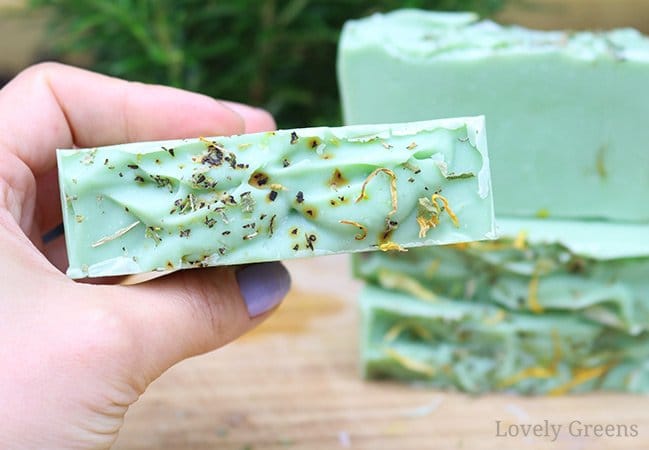
Using flowers and herbs in soap making
As a soap maker, I love using fresh and dried herbs to decorate soap. They’re also really useful in naturally coloring my bars too. Dried peppermint gradually bleeds a golden halo around every fleck. Alkanet root and gromwell root tint soap a natural purple. Poppy seeds are pretty as decoration but can also make soap more exfoliating.
However, there’s some debate as to whether or not the healing qualities of plants survive the cold or hot process soap-making process. If you’d like to use an infused oil in making soap, it’s best to either add a little to melt-and-pour soap, such as in this recipe, or in re-batched soap.
Re-batched soap is cold or hot process soap that’s been through the curing process and is ready to use. You grate it up then and heat it until it’s soft and gloopy. At this point, you could add a little infused oil before pouring it into molds to re-harden
